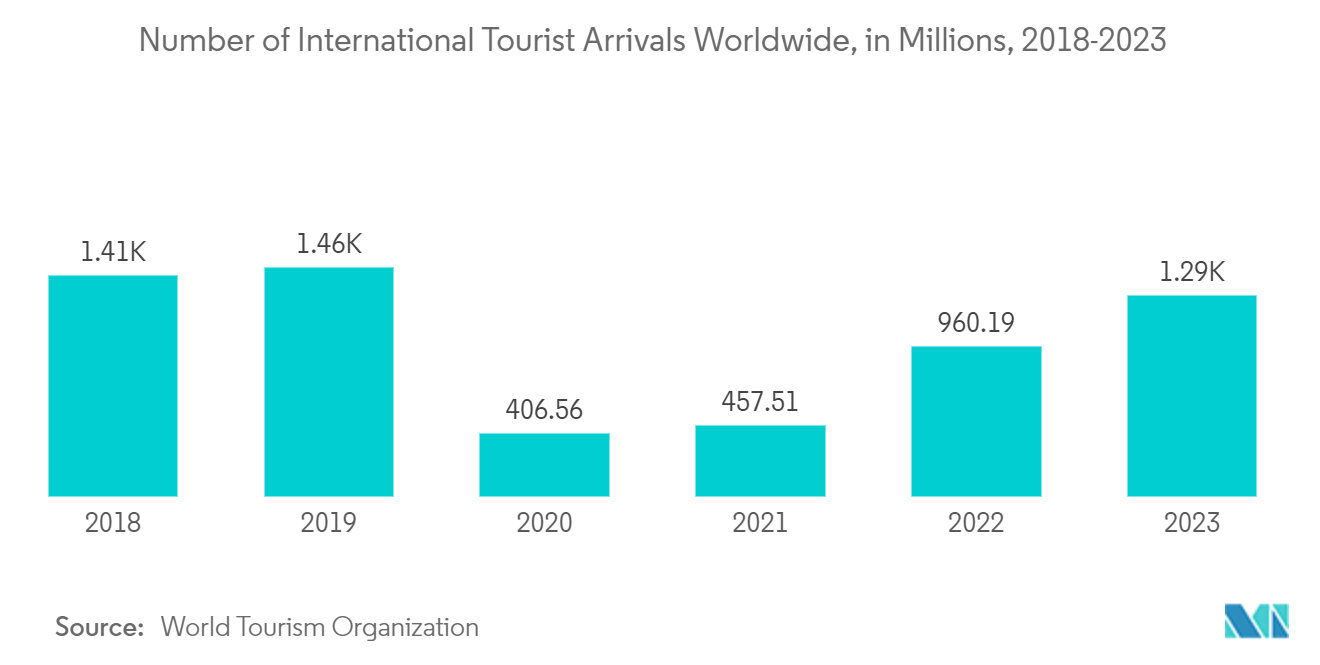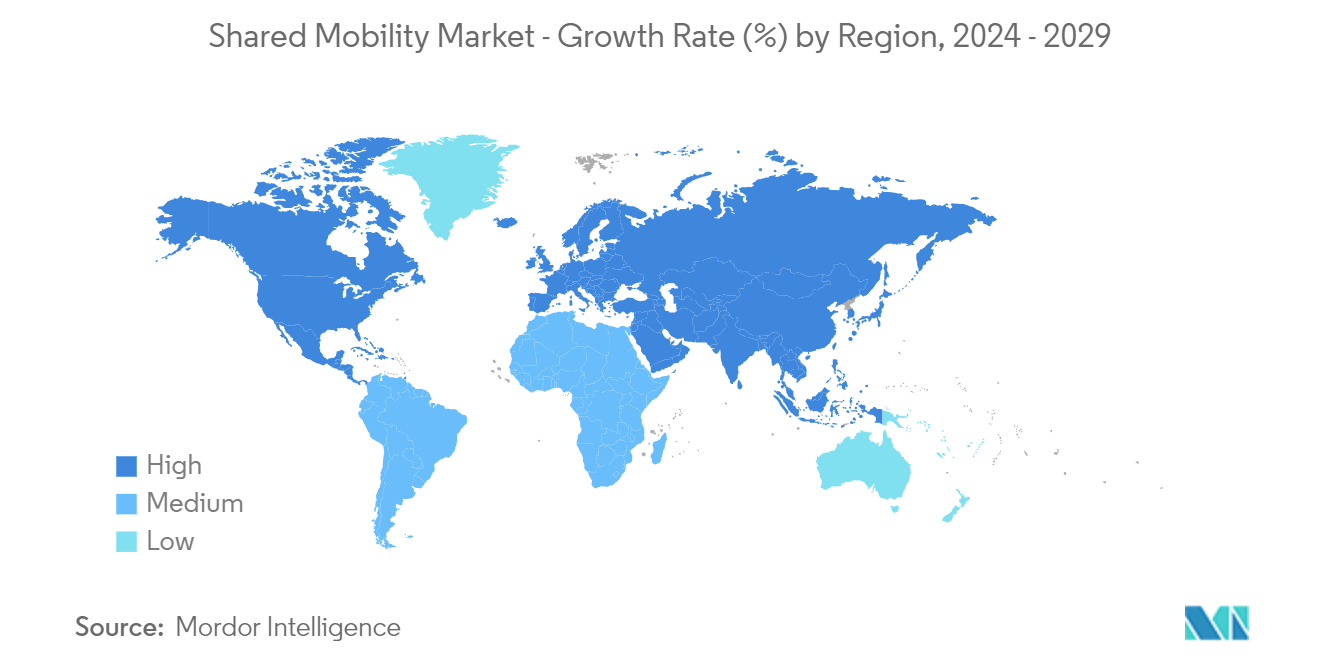Market Trends of Shared Mobility Industry
The Passengers Cars Segment is Expected to Gain Traction Between 2024 and 2029
Passenger cars are extensively utilized in ride-hailing, car-sharing, rental, and leasing services. Operators or individual owners deploy various car makes, such as hatchbacks, sedans, and sports utility vehicles (SUVs), to enhance customers' convenience. Therefore, the growing urbanization rate and the influx of tourists worldwide are significant determinants for the growth of the passenger cars segment, owing to their massive requirement for ride-hailing and rental services. Moreover, the rising investment in the corporate sector to expand job opportunities and expand economic growth leads to businesses demanding leasing services for employee transportation purposes, which, in turn, is positively impacting the demand for passenger cars segment.
- According to the World Tourism Organization, the total number of international tourist arrivals worldwide reached 1,258.66 million in 2023 compared to 960.19 million in 2022, representing a 31.0% Y-o-Y growth between 2022 and 2023.
- According to the Population Reference Bureau, North America, Latin America, and Europe were the leading continents worldwide with the highest urban population in 2023. The share of urban population as a percentage of the overall population in North America touched 83% in 2023, followed by Latin America (82%) and Europe (75%) during the same period.
To complement the government's effort to decarbonize the transport sector, ride-hailing operators and rental providers worldwide increasingly prefer deploying electric passenger cars in their fleets. Further, with more consumers demanding electric passenger cars as their preferred choice of transportation, these players are expected to invest hefty sums in acquiring new-age vehicles in their fleet to meet the surging demand, which, in turn, will positively impact the growth of this market segment.
- In November 2023, Green and Smart Mobility (GSM), a Vietnamese-based ride-hailing company, announced the launch of its electric taxi service in Laos and Vietnam to position its brand as a sustainable mode of shared transportation. The company plans to deploy Vinfast VF5 electric cars to expand its fleet, which will be available to consumers in Vietnam and Laos.
The shared mobility market is anticipated to witness the integration of various ride-hailing and rental companies worldwide, attributed to the lucrative opportunity that the market presents. As more companies integrate into the ecosystem, a massive demand will exist for passenger cars to be utilized for shared mobility. Moreover, consumers are shifting their preferences toward availing of lower-cost private transportation, which is further expected to foster the growth of this segment.

Asia-Pacific is the Largest Shared Mobility Market Across the World
Consumers’ increasing preference toward availing private mediums of transportation for traveling purposes owing to the rising need for convenience in personal mobility, high internet penetration rate, and the growing number of tourists in Asia-Pacific serve as significant drivers for the growth of the shared mobility market. Moreover, this region witnesses a substantial demand for two-wheeler hailing services due to the worsening traffic congestion and the need for faster city travel, which, in turn, positively impacts the growth of this segment.
- According to the World Tourism Organization, the number of international tourist arrivals in Asia-Pacific reached 233.43 million in 2023 compared to 91.52 million in 2022, representing a Y-o-Y growth of 155.0% between 2022 and 2023.
- According to the TomTom Index, Bengaluru and Pune in India were the sixth and seventh cities with the highest traffic congestion worldwide, respectively. The average travel time for commuters to travel 10 km in Bengaluru was 28 minutes and 10 seconds, while it reached 27 minutes and 50 seconds in Pune.
Further, integrating electric vehicles in shared mobility fleets can significantly reduce carbon emissions from the economy. Hence, governments across Asia-Pacific are increasingly strategizing to promote the use of electric vehicles in rental, ride-hailing, and other shared mobility fleets. Various new entrants are investing hefty sums in deploying electric cars in their fleets to cater to the increasing consumer demand.
- In September 2023, Ola Cabs announced the launch of its e-bike service in Bengaluru to promote the electrification of ride-hailing fleets across India. Between September 2023 and January 2024, the company witnessed a 40% expansion in this segment by completing more than 1.75 million rides. The company plans to launch this service across cities in India in the coming years.
Moreover, the expanding corporate investment in countries such as China, South Korea, and India is actively leading to companies demanding rental solutions, which, in turn, is further anticipated to contribute to the surging growth of the shared mobility market in the region. In the coming years, Asia-Pacific will witness companies spending hefty sums to enhance their digital platforms to attract consumers and actively seek partnerships with automakers to acquire vehicles in their fleet at a lower cost.


